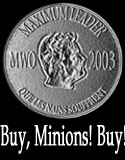My dad loves those “five-in-one” apple trees sold by the various glitzy commercial nurseries. I remember getting in trouble a lot as a kid. Running spastically about the backyard, I would occasionally break off a branch of one of dad’s high-priced trees. So his five-in-one apple tree would become a four-in-one. Then a three-in-one. Then a two-in-one.
Pity Vater Smallholder. He would get so excited about his new tree and then his hyper little boy would maul it down into a mangy stump.
Today, dad has his own couple of acres of hilltop paradise and has planted quite the little home orchard for himself. Of course, the deer don’t understand that the fruit is supposed to be for humans. So the deer have taken over my role of maiming his apple trees. He even tried to convince the local game warden to give him a kill permit like I have so he could defend his trees with lethal force. Denied the license to kill, he has been known to spend Spring nights in a lawn chair in the front yard, rat terrier in his lap, ready to chase away any nighttime Bambi visitations.
Dad has been a great help around the farm and I have really enjoyed hanging out with him, so I bought him a present - participation in a grafting workshop. In compensation for the many trees I had maimed, I would take him to a class where he could learn how to make his own five-in-one trees. I signed us up for a grafting workshop hosted by Vintage Virginia Apples.
Vintage Virginia Apples is a tiny little family farm in North Garden, Va., just down the road from Sweet Seasons Farm. While it does not support the family as a fulltime occupation, three generations take time out from their “real” jobs to help run this wonderful little agricultural plot o’ land.
VVA is helping keep a wide selection of rare apple varieties alive, standing athwart the modern movement toward uniformity. They will sell you boutique apples, apple trees, and train small hobbyist “pomologists” in the art of orchard creation and maintenance.
The leader of the grafting workshop was none other than Tom Burford of the legendary Burford Borthers nursery in Monroe, Virginia.
Tom Burford!
Are you guys as thrilled as I was?
Probably not.
Tom Burford is a legend of the apple field. His family has been grafting apple trees since the 1700s. Tom is responsible for the (small) renaissance of neglected varieties in America.
Imagine if you went to an introductory guitar workshop and Eddie Van Halen was the teacher.
Or if you went to Catechism class and the Pope was standing at the front of the room.
I have several books on the old farm bookshelf that talk about Burford’s contributions to pomology.
The problem with having such esoteric interests is that no one really understands how exciting this was. My wife humors me. One of my teaching colleagues, upon hearing my tale, replied “Every day Iv m more and more shocked that youv re married.”
So I’m an orchard geek.
There were a fair number of people at the workshop. Some were simply backyard hobbyists. One woman was on vacation from her Californian bed and breakfast and wanted to learn how to graft the century-old apple trees on her property. When the historical trees succumbed to old age, she wanted clones ready to fill the gaps. One of my tablemates was in his early sixties and wanted to be able to preserve the varieties from his grandmother’s farm. The whole room was full of affable apple aficionados from widely divergent backgrounds.
But as interesting as the other workshop participants were, it was Tom Burford at the head of the class!
Where else will you find an agrarian who spices his lectures with phrases like “Call me a Luddite, but I think he loss of historical flavors is a great tragedy?”
Tom opened his talk by discussing why we needed to have a workshop at all. Knowledge of grafting used to be well nigh universal. But World War II acted as an historical interrupter. Young men went off to war, came back to college on the G.I. Bill, and moved to the suburbs. Away from home in the years they would have been learning how to make new trees, they then acquired the affluence to buy ready-made trees. Specialty nurseries began to make trees for the Harry homeowner market - and they tended to focus on a few varieties to streamline their inventories. At the same time, the introduction of the interstate highway system and the growing interstate nature of the agricultural trade led commercial orchards to concentrate on apple varieties with long shelf lives and/or attractive outer coverings. Taste was sacrificed on the altar of commercialism.
But a few small nurseries kept the old flavors alive.
Now I’m doing my part.
Please excuse any typos in this post. I’m typing with a bandaged finger. While doing my part to keep the old flavors alive, I slipped with the grafting knife and gouged out a dime-sized (though shallow) chunk of my pointer finger. Apple grafting workshops are not for sissies. One woman had to go the emergency room and one of my tablemates ought to have gone. There were probably a half-dozen minor gouges like mine.
But the blood was worth it.
I walked out with six new trees:
A Arkansas Black
An Ashmead’s Kernel
A Black Twig
A Grimes Golden
All in all, a cool day. Hangin’ mit Vater Smallholder, learning from a celebrity, and getting new trees for the orchard. Is there anyone out there who can understand my joy?
The internet is a funny thing. You can run into people who share your unusual hobbies. I got an e-mail from Australia last month from a hobby farmer who likes Ayrshires as much as I. I wonder if any of our readers are amateur pomologists? Let me know!


